Beachcombing is when you go to a beach with the intention of looking for things that interest you. This could be sea glass, pottery, marbles, bottle stoppers, or even trash. Some of my local beaches have volunteers who visit the beach in groups to collect the trash others leave behind or get washed up on the beach.
If you go beachcombing, you are a “beachcomber”. A beachcomber is someone who searches the beach, specifically looking for things to find. Many years ago, the word “beachcomber” could be used to describe a criminal, a drifter, a bum, or even a sailor deserting from his ship.
Modern-day beachcombers usually look for sea glass, pottery, and other things that may have washed up onto the beach from years gone by. I often wonder what those people would think about us collecting their rubbish like it was a treasure! to be displayed as one of our prized possessions. Would the Victorians think we were crazy? I wonder. Who knew that the rubbish from the olden days would become so valuable to us when those people so easily disposed of it?
What to expect from our article
Who can go beachcombing?
Anyone, young or old, as long as they are physically fit and able to get onto the beach, can go beachcombing. I have found beachcombing to be highly therapeutic, not just for my mental health but also for my physical health too. Each time I go to the beach, I’m able to do that little bit more. For me, there is nothing more freeing than the peace and tranquillity of an empty beach and being alone with my thoughts.
Some beaches are hard to get to because of their terrain, while others are easy to get to. Some beaches can be pretty treacherous, and great care should be taken when accessing these types of beaches. For instance, one of our local beaches is close to the mouth of the River Severn, so most of the beach is covered in thick mud. This mud is very dangerous, and great care and attention should be taken when visiting these beaches, as it is so easy to get stuck in the mud.
The first time we went, we walked around these rocks, and instead of sticking to the inside on the other side, we started walking diagonally across the beach. My partner was slightly ahead of me, and we were chatting away, not paying attention to the ground, when suddenly, he stepped into really thick mud and couldn’t get free. You could say, well, how didn’t he know it was mud? Sometimes the mud looks like regular sand, and it’s not until you stand on it that it sinks 7–10 inches. After a few minutes of panic, he laid down and managed to unstick his feet. He was covered in mud, but this was nothing compared to what could have happened had the tide been coming in. This is why it is so essential that you are aware of your surroundings and the tide times at all times.
Beachcombing does also require quite a lot of energy. You always have to bend down and pick things up; walk for long distances; climb over rocks; and sometimes even over dunes. This can be pretty tiring, so don’t try to do more than you can handle.
Why has beachcombing become popular?
Beachcombing has become a lot more popular in recent months; one reason for this is crafting, as people have realised that there is value in the things found on the beach. These items can be turned into jewellery, sun catchers, or even pictures that can be sold to other beachcombing fans.
Beachcombing has become popular because people also like to collect things. Collectors of sea glass like to keep it on display in some way or another so that they can look at it and enjoy it. A collector keeps the things they find on the beach and finds ways to display them.
Old printer trays are a handy item from back in the day that is often used to display beach treasures. Most printer trays are just one drawer from an old cabinet. These drawers have dividers that make them perfect for showing off beach treasures. These trays can also be mounted upright on a wall, which means they make great display pieces.
Displaying sea glass in a vase is always great; the different colours of sea glass in a vase on a window sill can be spectacular because they shine so beautifully in the sunlight. Collectors like to enjoy their treasures and put them on display, like they would a photo or a painting, and the best thing is that you have found the treasure, which makes it even more special.
What can you find while beachcombing?
Sadly, we all know that rubbish can be found on the beach. But there’s also sea glass, sea pottery, shells, and even old glass bottles to be found. On some beaches, you may not find anything at all. Before you go collecting things from the beach, we recommend reading our beachcombing UK law article to discover what you are allowed to take from the beach.
Other things you can find on the beach are remnants of the war, like bombs, grenades, and bullets. While it’s exciting to find these items, there have been many times when live ammunition has been found, and the bomb disposal team has to be called in so it can be safely disposed of. If in doubt, you should always ring the coast guard and report any suspected items.
If you find one of the items listed above and think it is live, you will need to report it to the coast guard; they will usually evacuate the area and cordon it off to carry out a safe and controlled explosion of the item.
Where can you go beachcombing?
You can go beachcombing on any beach, but not all beaches are the same, and some beaches don’t produce much of anything at all. If you want to find sea glass and pottery, then the best beaches for beachcombing are shingle-type beaches. Shingle beaches almost always have some sea glass or beach pottery on them. You can also find old marbles, bottle stoppers, and even some beads and buttons, either on the surface or just sitting in the shingle waiting to be exposed.
What are the best beaches to go beachcombing on?
The best beaches to go beachcombing on are those with a lot of previous history. Because they were heavily used, beaches near old harbours or factories will yield the best finds. We all know that where there are people, there will be trash, and that’s where the best discoveries come from. There would be thousands of ships in harbours all over the country, taking goods to other countries. Some of those ships may not even have made it to the port, and they end up spilling their cargo into the sea.
The Bristol Channel was the main way for ships to leave the UK and go to other countries, but bad weather alone caused thousands of ships to sink along the coast. Many hospital ships and warships were blown up during the war, so that stretch of coast has untold history spilling onto its beaches just waiting to be found. Not to mention the people aboard the ships that would have thrown their rubbish overboard.
Back in the day, factories near a beach would have disposed of glass directly into the sea. Places like Seaham in England had several bottle factories, and they all disposed of their scrap glass into the sea. The sea glass that comes from Seaham is some of the best sea glass ever found. These days, businesses have their waste collected by their local authority. Way back in the day, they didn’t have the same refuse service as we do, so they used to just throw it away anywhere they could.
Many coastal refuge sites are dotted around the country; my favourite beach refuse site is based in Lyme Regis in Dorset. Whenever we have some terrible weather, the cliffs erode, exposing some fantastic finds. This beach is littered with sea glass and pottery, but now and then, you will get some quirky finds like an old teapot or an old iron, and if you are fortunate, you can also find coins and bottles there.
Lyme Regis is an excellent beach for a beachcomber. The only downside is that it’s two and a half hours away from us, but when we do go, I always have to drag the family away from there because they enjoy it so much and we can’t wait to go back.
Jurassic Coast
Lyme Regis is also known as the Jurassic Coast, so there are always plenty of fossils to be found. In 1811, a young girl named Mary and her little brother Joseph found an ichthyosaur on Lyme Regis beach. They sold it for £23. It was later sold at auction for £45 and five shillings. Mary made somewhat of a good living out of selling the fossils that she found at Lyme Regis and later went on to open a fossil shop.
See our best Beachcombing tips


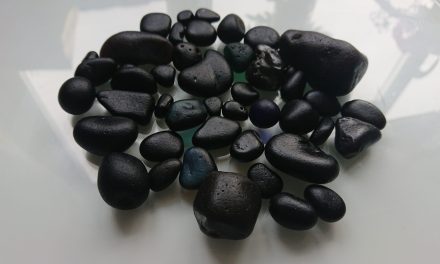
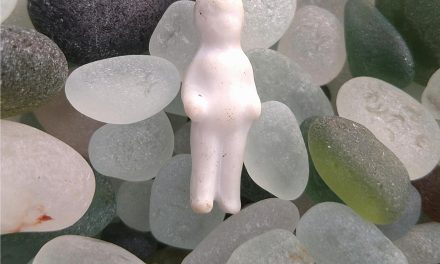
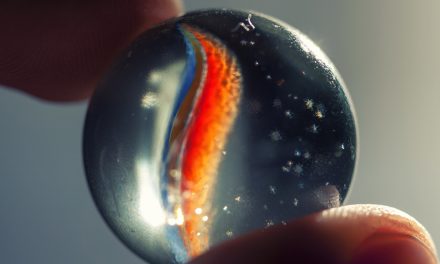
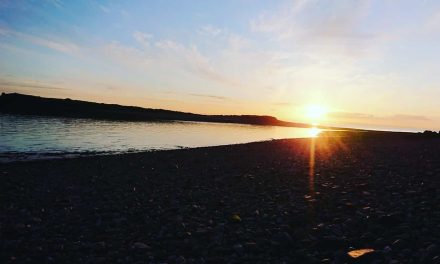



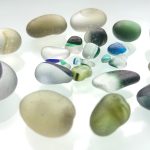

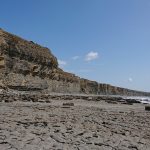

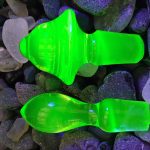



Trackbacks/Pingbacks